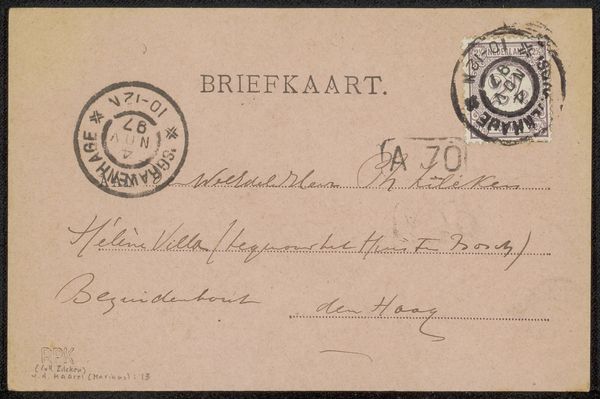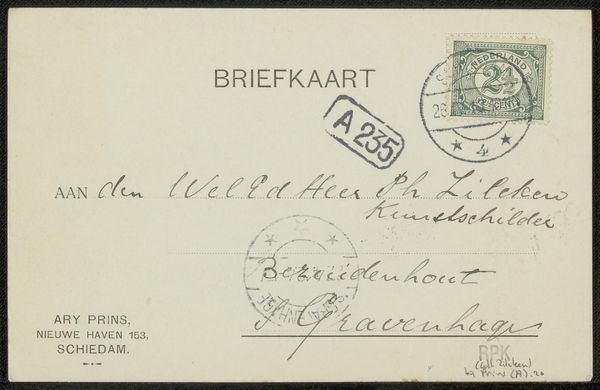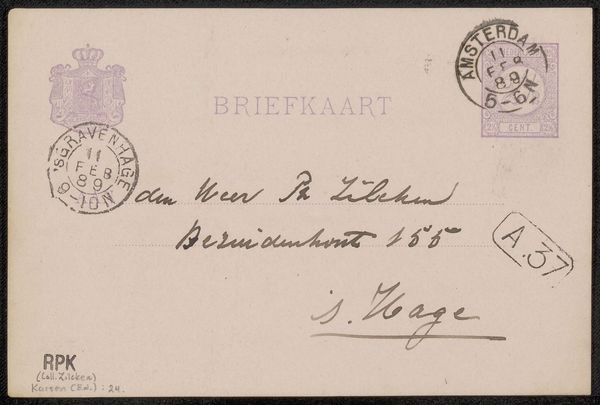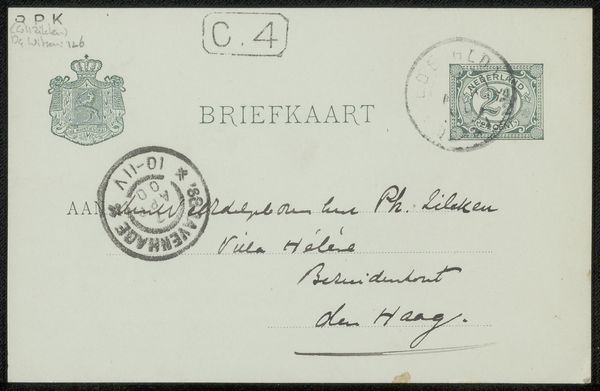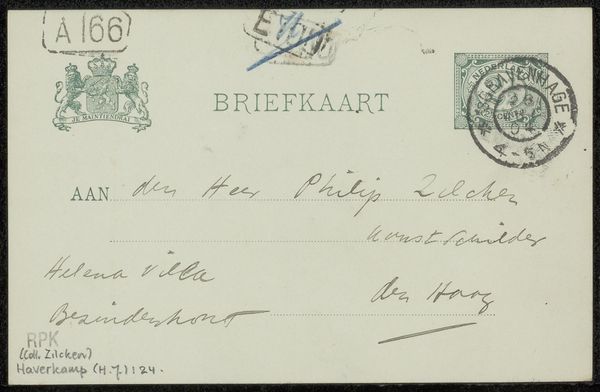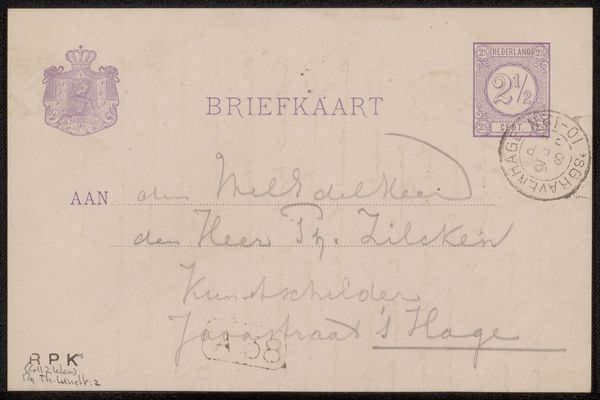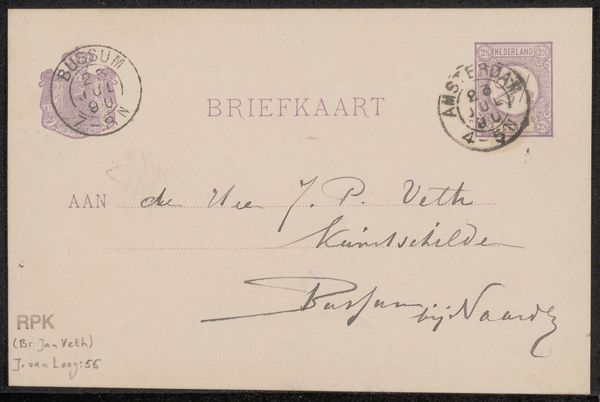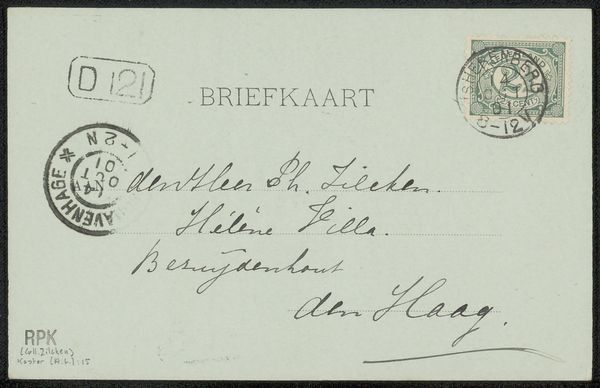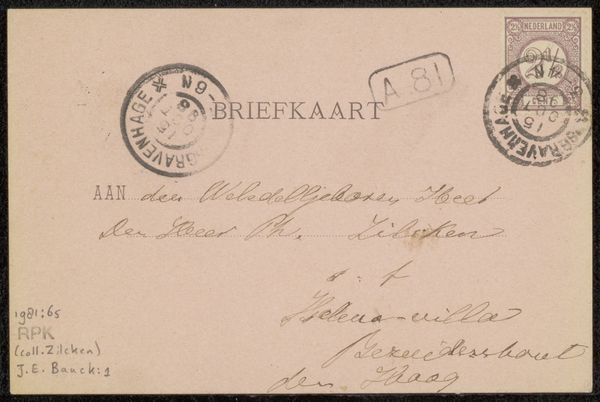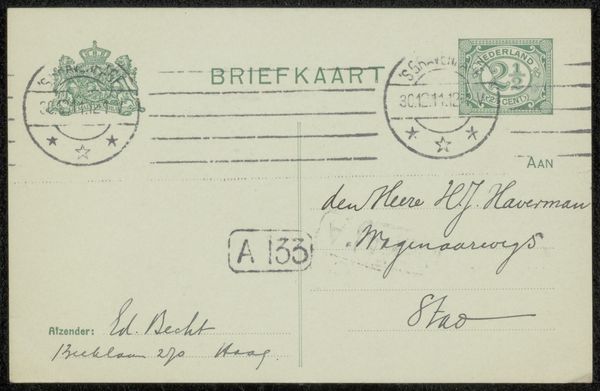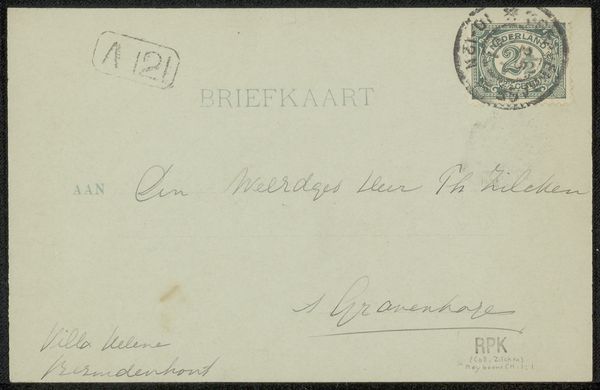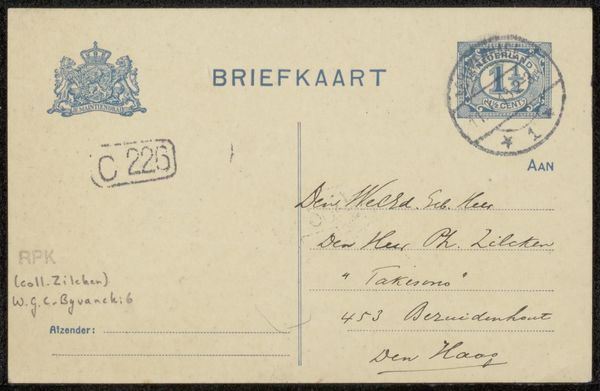
drawing, graphic-art, paper, ink
#
drawing
#
graphic-art
#
hand written
#
script typography
#
hand-lettering
#
hand drawn type
#
hand lettering
#
paper
#
personal sketchbook
#
ink
#
hand-written
#
hand-drawn typeface
#
fading type
#
handwritten font
Copyright: Rijks Museum: Open Domain
Curator: Here we have a “Briefkaart aan Philip Zilcken,” a postcard drawing by N.J. Singels, likely from between 1910 and 1919. It appears to be ink on paper. Editor: It's interesting. My immediate reaction is to the physical presence of the handwriting itself, how much the form mirrors content here – like a captured breath from the past made permanent through ink. Curator: Absolutely, the materiality of the postal system, the standardization of the "Briefkaart," and the individual inscription combine in fascinating ways. Look at the specific ink used; analyzing its components might offer insights into the writing instruments available, suggesting levels of social class through the writing supplies. Editor: The history is palpable. Consider the journey of this card through the postal system: the stamp, the postmark. Each an institution, a testament to standardized practices and infrastructural networks crucial to communication and commerce at the time. This card as a physical object existing within established systems. Curator: It's a delicate dance between the official and personal. Notice how the pre-printed text dictates the placement of the address, which confines the space for the handwritten message. Editor: That forced restriction makes the character of the hand even more poignant, doesn’t it? Think about the postal workers, sorting and delivering these cards. How many hands touched this object, shaping its history and the way this piece operates as a kind of index to this historical moment. Curator: Furthermore, it begs the question of what meaning did Zilcken take from this "Briefkaart." What part of Singels inscription created that interpersonal dynamic we might never understand. Editor: The very act of sending and receiving becomes performative within established social structures, too. I find the way everyday ephemera intersects public and private spheres particularly compelling here. Curator: Yes, and I wonder what other communications, what type of paper, what inks Singels made use of. Editor: It brings into focus how integral everyday items like paper and ink are for our personal relationship to social institutions, how intimately they record our cultural heritage. Curator: Precisely. By zooming in to look at materials and context we start a conversation around broader implications about person, place, and politics of the time. Editor: Indeed, revealing connections that may not be visible at first glance.
Comments
No comments
Be the first to comment and join the conversation on the ultimate creative platform.
